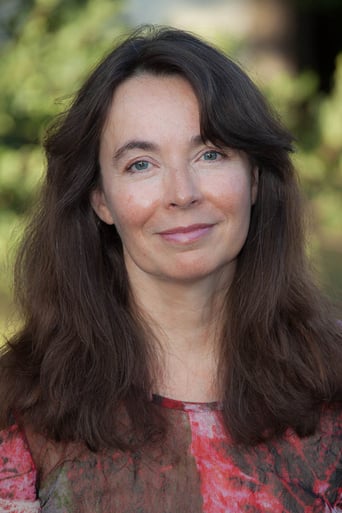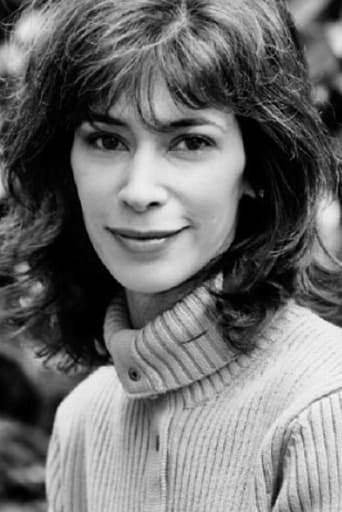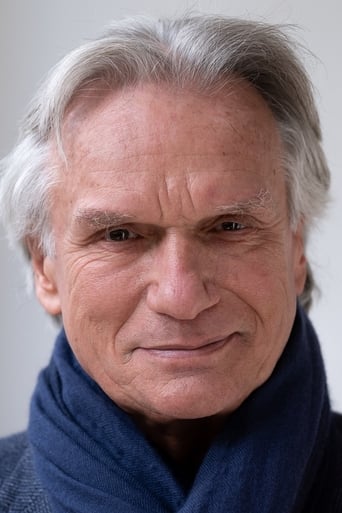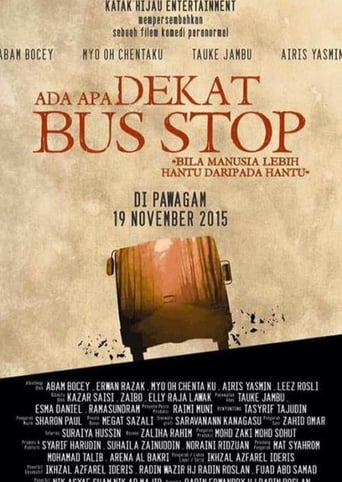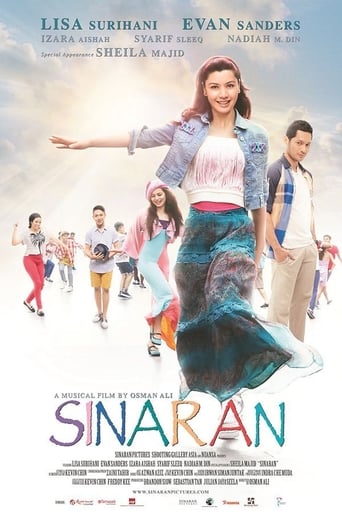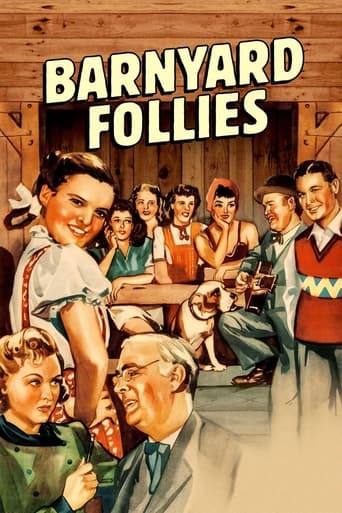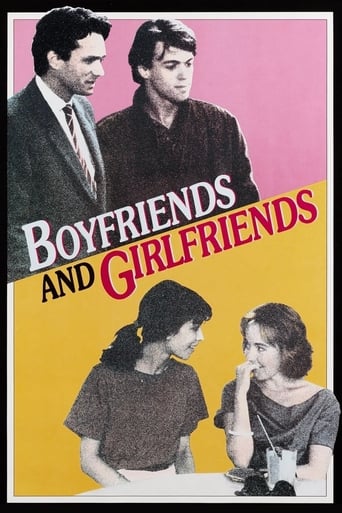
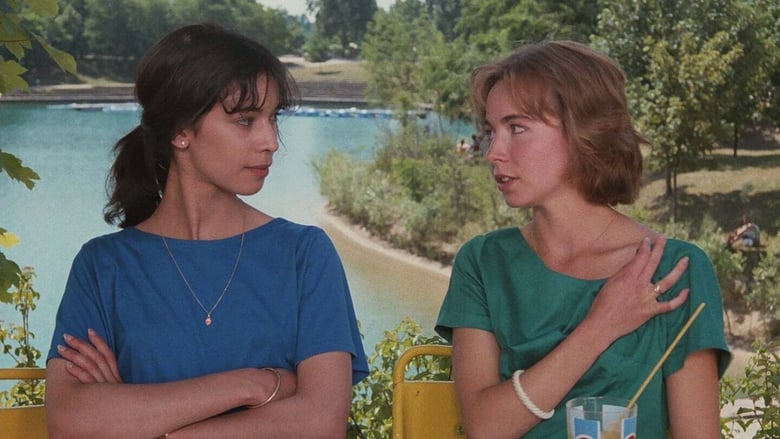
Boyfriends and Girlfriends (1987)
Middle-class Parisian suburbs: Blanche and Léa, office worker and student, meet and become friends. Léa is going out with Fabien, but is thinking of leaving him. Blanche falls for Léa's handsome and witty friend Alexandre, but is tongue-tied whenever she meets him. Léa goes on holiday and Blanche, still smitten with the dashing Alexandre, begins to get to get know Fabien.
Watch Trailer
Cast
Similar titles
Reviews
I love this movie so much
The Worst Film Ever
Good story, Not enough for a whole film
Blistering performances.
Eric Rohmer was more than one of the directors who formed the French New Wave. He also wrote a lot of surveys and articles about cinema, especially about his favorite director, F.W. Murnau, out who he wrote his dissertation. His first article that got published in the year 1948 was titled (directly translated:) "Film, art of space." In the year 1962 Eric Rohmer published his academic survey called: "The construction of space in Murnau's Faust." While reading about his surveys and articles, it's no surprise that space in Rohmer's films seems to be as important as the plot.Eric Rohmer's career started with problems, and it wasn't going forward. But when he got off the ground, he proceeded more purposefully than anyone. When the new wave era ended in 1964, the directors of it started eventually finding their own path. Eric Rohmer started his series of six film, The Moral Tales and continued with Comedies & Proverbs in the 1980's. L'ami de mon amie (My Girlfriend's Boyfriend) is sixth and the last one in the series. It builds around the proverb: "My friends' friends are my friends." The comical situations emerge between two women who unintentionally swap boyfriends.Two women suddenly meet while having lunch. One of the two women is Blanche, she is a skinny, uptight young woman, who is still searching for herself. The other is Lea, she's self-confident and a very feminine person. They both have something going on with men, so the main characters have their opponents; shy Fabien and a true player, Alexandre.While trying to figure out the space of My Girlfriend's Boyfriend, I can't miss the futuristic city the characters live in. I got the feeling that Eric Rohmer isn't trying to tell a story of four specific people who live in France. To me he's telling about all the people living in these suburbs of Paris. The space of a futuristic city, the city full of postmodern architecture without any past. This theme of the milieu leads to rootlessness. The people of this city have no past, each of them like to analyze and talk about themselves. But none of them really know who they are.My Girlfriend's Boyfriend offered these kind of things for me. In addition to its intelligent narrative, it is full of hilarious comical situations. Eric Rohmer builds four very interesting characters which will take you on board."My friends' boyfriends are my boyfriends."
I recall my first watching this on TV in my early twenties alone on a Friday night and thinking it would pass the time...little did I know that I would slowly fall in love with this film.The convincing performances of all those involved in particular, the tenderness of the romance between Blanche and Fabien is truly wonderful, mimicking true love with uncanny accuracy -something no film anywhere has achieved so authentically. Their scenes on the towpath are so well played , one feels a voyeur intruding upon what should be a private moment. No other film maker could have made this without exploiting it -only Rohmer has the respect for romance to leave things to the imagination.To my surprise, I found myself living the film myself a couple of years later and Rohmer's authenticity was confirmed. Watching this takes me back to being a young man again and the wonder of love.From this start , I developed an affection for Rohmer's work, enjoying Rendez-Vous A Paris and A Summer's Tale but for me, this is THE ONE.
A young woman, Blanche (the lovely Emmanuelle Chaulet), works in the City Hall of a trendy New Town near Paris (somewhat to his discredit, Rohmer's films always occurs in middle class and upper middle class milieus, never in working class neighborhoods or in the immigrants building projects). Having recently arrived there, Blanche lives quite a lonely life, until she becomes friends with another young woman, Lea (Sophie Renoir), through which she met her boyfriend Fabien (Eric Viellard), and an acquaintance of the couple, Alexandre (François-Eric Gendron). Basically, the movie follows the time honored plot of exchange of relationships. A is with B, and C with D, but then A will start a liaison with D, which will make C jealous, and would start going with B in revenge and so forth. The title in French is a pun: the boyfriend of my friend would (could) become my boyfriend. Rohmer is known to be a political conservative, but here he is hardly a moralist, since he examines the sexual freedom of today's youth without condemning it. The movie is slow and talky, but these characters are believable and appealing (if somewhat shallow and a bit better looking than ordinary).
A young woman, Blanche (Emmanuelle Chaulet), is working in the City Hall of the New Town of Cergy Pontoise, in the north west of Paris, on the banks of the river Oise. Alone, recently arrived in the Parisian Region, she befriended another young woman, a computer science student finishing its school, Lea (Sophie Renoir) with which she met her boyfriend Fabien (Eric Viellard), and an acquaintance of the couple, Alexandre (François-Eric Gendron). The French title (l'ami de mon amie, the friend of her friend) is more explicit than the American or English one. (Boyfriends and Girlfriends): A reference to the saying 'the enemy of my enemy is my friend' but distorted to 'the friend of my friend is my friend'. This title, an example of the irony of Eric Rohmer, the boyfriend of my friend could become my (boy)friendThis film belongs to the cycle Comedies and Proverbs, the former term being as important as the latter one in order to understand the meaning of the film. This cycle, filmed in the eighties followed the precedent older cycle, six Moral Tales. Where as the latter concentrated on middle aged married man tempted by another woman but who finally, in relief, returned to his wife, Rohmer in the series of Comedies and Proverbs, turns his attention towards younger female characters. But because it is comedy, the tone is also much lighter and ironic. Here he examines the sexual freedom, (which in fact he disapproves but never condemns overtly in his films), its consequences and how the younger generation is trying to live with a new set of rules.One of these rules, never sleeps with the friend of her or his friend, as often, in earlier time with the traditional moral, is finally broken. But there is more than a tale of love and seduction. It is a study of characters and how love creates a web of relationship among this small group of young urban professionals. As the relationships between them evolve the spectator finally feels some sympathy for the protagonists, at first not very likable. Especially Blanche who is the center of the entire plot, if one can tell of real plot in Rohmer film. Alone self-pitying, infatuated with the irritating, pretentious, serial seducer Alexandre, she blossoms when stricken by real love. She is opposed to her friend yet rival, Lea, physically as well mentally. With dark hair and tall, Lea is freer sexually than the small light-haired Blanche awaiting the great love for two years. The quest of Blanche is the perfect true love, not just an adventure. Ironically, at first she blindly falls in love with the great local seducer Alexandre.With discreet symbolism, Rohmer gives clues about the different players. Blanche (white in french), around whom the whole film revolves demands only a pure love. As Delphine in Summer (Le Rayon Vert), the precedent film of the same cycle, the very absence of love, this void, fills here with anguish. Its flat at Cergy Saint Christophe is decorated in minimalist white fashion, thus emphasizing the loneliness of its life. Blanche and Léa sport alternatively the same colors, green and blue, this swap of colors underlining the possible swap of boyfriends.Rohmer, because of its interest in urbanization (the DVD version contains a documentary he made earlier on industrial aesthetics), sets the action of the film in the New Town of Cergy-Pontoise, described as a quiet, modern, ultra clean Utopia. In fact the spectator sees the town only through Blanche eyes, mainly the pedestrian streets around the center, the banks of the river Oise, the Ricardo Bofil buildings where she lives. But I don't think the Cergy depicted could be viewed, as often said, as a reflection of a superficiality of its young 'yuppies' characters. The purpose of Rohmer was to see the impact of modern architecture on love life. But the answer is in the film: It changes nothing. On the contrary it amplifies or underlines the love relationship between the different characters.'L'ami de mon amie 'is an extremely enjoyable film, full of charm, thanks to the direction of Eric Rohmer and the talent of its young actresses, then in theirs early twenties, like the young women they play. The frozen moment of happiness at the end of the film, just before the credits contributes to its charm. But it is problematic: Have the protagonist found enduring love? Will their love relationship and in the same time, their friendship endure the strain of time? Nothing in fact is sure as irony is always present. But if ironic, Rohmer doesn't despise his characters. On contrary he shows a real tenderness and comprehension towards them, especially Blanche.One of the lighter films of Rohmer, of course very talkative, it is characteristic of all its work, with good mannered young people in search of love while searching themselves. Because of the minimalist direction, it has not aged much since its shot in middle of the eighties. Yet, you can glimpse of the fashion of its period in the clothes of the players if you pay attention on certain details Nowadays, Cergy has aged and worn out a little. Never the modern utopia ironically depicted by Rohmer, it is still a well maintained active town.
